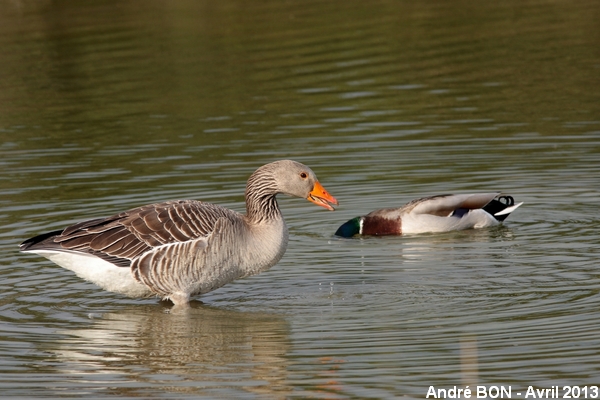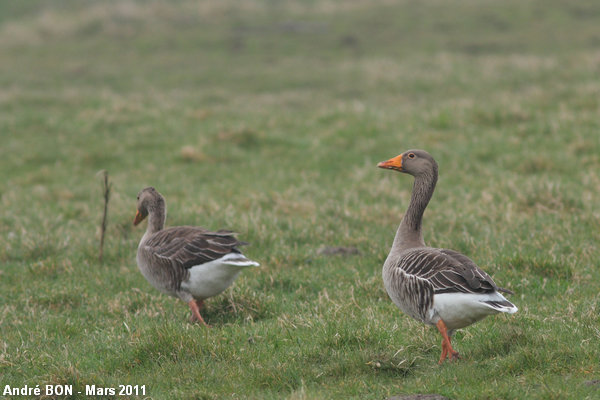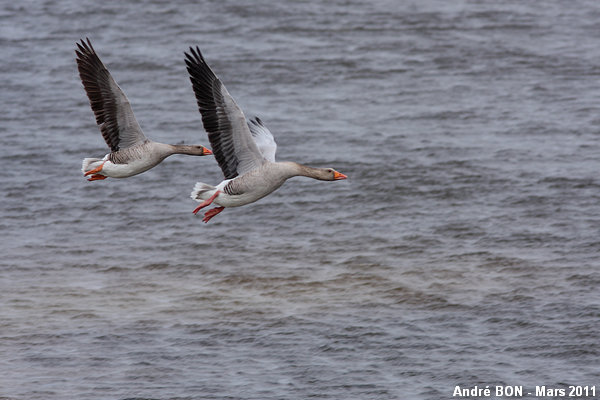




| Greylag Goose (Anser anser (Linnaeus, 1758)) |





|
|
Scientific name: Anser anser (Linnaeus, 1758) Common name: Greylag Goose French name: Oie cendrée Order: Anseriformes Family: Anatidae Size: Body size: 75 to 90 cm; Weight : 2300 to 3500 g; Wingspan : 147 to 182 cm. Habitat: Banks of lakes and reservoirs, estuaries and meadows. Food: The Greylag Goose is vegetarian. It feeds on terrestrial and water plants, including roots, tubercles and seeds. Nesting: The nest is built at a low height or on the ground in the bank vegetation. It is made up of a heap of stems or dried reeds and it is lined with down. Females lay from 4 to 9 eggs in April. Migration: In winter, Greylag Gooses move to western or southern Europe, to North Africa or to southern Asia. They are very noisy when they fly and they form large V-shaped flocks which can count as much as 200 birds. Geographic area: Europe, North Africa, Asia, Argentina. |
The Greylag Goose has a greyish brown plumage with white edging on the upper side. The underside parts are pale grey and mottled with dark brown. The tail is white with a grey patch on the upper side. The bill is pale orange. The legs are pink. |
| [To know more about the Greylag Goose] [Next picture] [Top] |

|
I have observed this Greylag Goose in the park of Marquenterre in the Somme bay. I am not quite sure that this bird can be considered as a real wild bird. |
| [To know more about the Greylag Goose] [Next picture] [Previous picture] [Top] |

|
I think that the Greylag Gooses observed at Den Helder, in March, will soon fly northwards to spend their summer in the northern regions. |
| [To know more about the Greylag Goose] [Next picture] [Previous picture] [Top] |

|
I have mainly observed Greylag Gooses in pairs. |
| [To know more about the Greylag Goose] [Next picture] [Previous picture] [Top] |

|
Unfortunately, having no picture of a large V-shaped flock in flight during a migration, here is just the take off of one pair leaving a pond to feed a little further in a damp meadow. |
| [To know more about the Greylag Goose] [Previous picture] [Top] |

|
We stopped on the road side to observe this large flock of Greylag Gooses. |